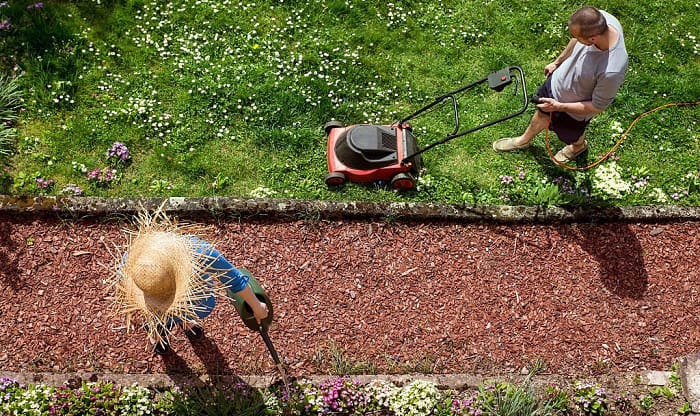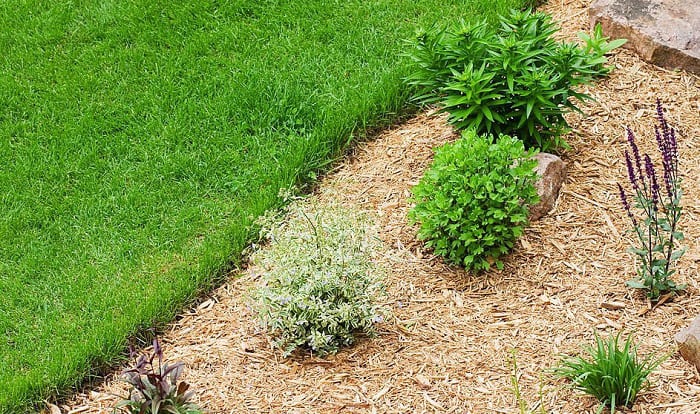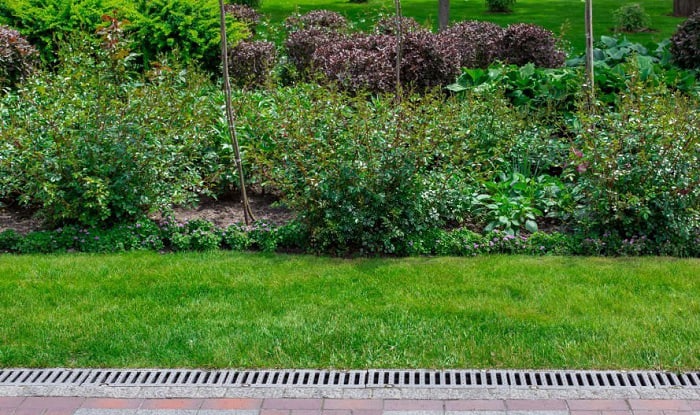Do you want to separate grass from flower bed and prevent weeds from taking over your soil? Are you tired of your rectangular yard and want to add some curves to it?
If your answer to either of these questions is “yes,” knowing how to edge a garden bed is helpful. We’ll show you how to do this task below and beautify your yard.
Table of Contents
Trench Edging Technique – Step-by-Step Guide
The best way to edge a flower bed is to create a trench edging. I like this method because it’s very straightforward, as you only need to dig a hole and add mulch to it.
Prepare the following tools:
- Metal edger
- Water hose
- Shovel
- Rake
- Mulch
Step 1: Make an outline of your garden edge
Before you start digging, find a water hose and place it on the ground to form the shape of your garden edge.
Position the hose in a straight line or in curves so you have a reference when you dig.
Step 2: Dig the ground
Take your metal edger and dig along the hose you laid out. Do this until you’ve gone through the entire length of the garden edge. The trench you make should be 4 to 6 inches in depth.
As you dig, you can put the soil from the ground into a wheelbarrow for easy disposal.
Remember to remove the grass from where you insert your metal edger as well; you can complete this task with a shovel.
Step 3: Add mulch
Spread a layer of mulch on the trench you’ve created. I recommend using 2 to 3 inches of pine bark. It lasts longer than many other organic mulches and helps plants retain moisture.
Use a rake to distribute the mulch evenly across the ditch and along the garden edge. This step will prevent weeds from growing.
That’s it! You’ve finished your garden edge. You may hear this type of structure being referred to as Victorian trench edging as well, though it’s unclear how this name came about.
It’s vital to remove grass near this border regularly and re-dig its trench once a year. Doing so shouldn’t take up much of your time.
Tips for Edging Garden Beds
- If you don’t want to tire yourself out with manual digging, you can use a motorized trencher to edge a mulch bed.
- You can place an anti-weed mat at the border of your garden beds. This product is often made of coco fiber and will fit around curved areas well. The only negative is that you’ll eventually have to replace it.
- Although a curvy edge will look pleasing to the eyes, right angles and straight lines are better for lawn mowing.
What Are the Types of Garden Edging?
There are several types of edging for landscape beds, and which one you pick depends on your preference. Above, we’ve discussed trench edging, which only has soil, mulch, and no extra outlining material. Below are some other types of garden edges and the materials for their perimeter:
- Brick and concrete – These options are both durable and customizable. However, concrete is more expensive than other edging materials.
Flower bed edging concrete can be either poured or precast. Poured concrete is more permanent and will make the edge shape harder to change. The precast type, however, is more malleable.
- Plastic – Plastic is affordable, but it is less sturdy compared to brick and metal.
- Metal – Metal edging often uses steel and aluminum. Both can give your garden a nice appearance, but aluminum is less susceptible to rust.
- Stone – It’s possible to edge your yard with stone, and many people like this material because it is available in nature at no cost. Stone also gives off a classic yet elegant look.
- Wood – Wood is available at a low price, and you can buy this edging material at different lengths to fit your garden. However, it is important to pay attention to its rot resistance.
Conclusion
We hope you now know how to edge a garden bed. Aside from the basic trench with mulch above, consider trying out other ideas to add charm to your yard as well, such as using paving stone, adding benches along your garden edge, or installing slate tires next to it to match your patio.
Thank you for reading. Please share this article with others if you like.

Hi, I am William – Floridayards’ digital content creator. My job is to find answers to all your concerns with thorough research and our team’s expert advice. I will also bring you honest reviews on the best products and equipment for raising your beautiful garden. Please look forward to our work!













